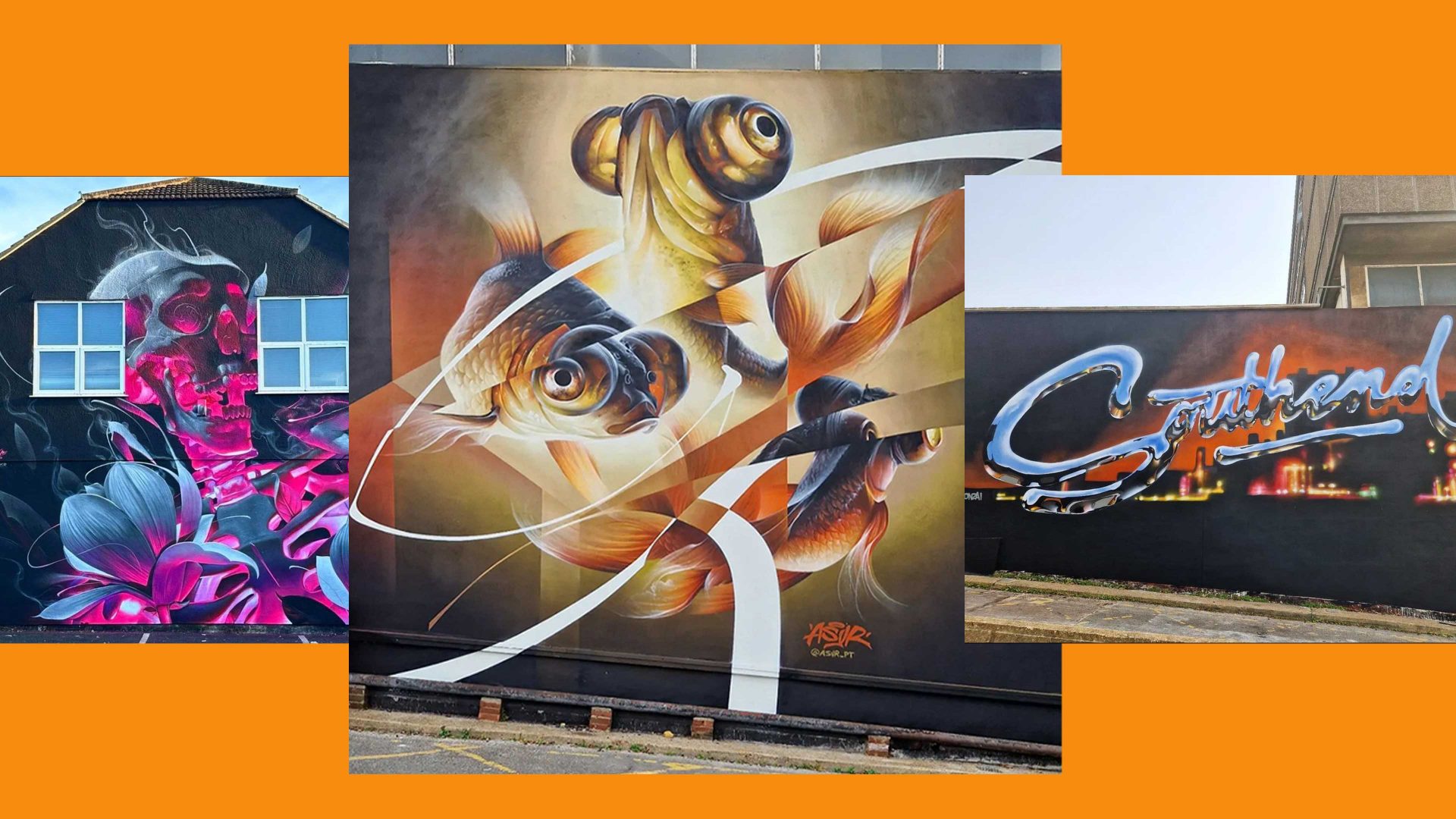Hip hop beats, solvent fumes and graffiti-covered walls would once have been considered bad news in any city centre. These days, they are sponsored by the council and praised by the local Tory MP. My hometown of Southend’s City Jam 2023 – the biggest street art festival in Europe – saw in excess of 200 artists from all over the world take over the streets in the glorious sunshine of that first weekend of September’s Indian summer. The Conservative-led city administration were official backers, while the MP for Southend West, Anna Firth, was so enthused she called for a debate in the Commons “on the role of street art as part of our rich cultural heritage”.
Southend’s street scene has now been left with some lasting European flavour. By the central rail station, opposite Wetherspoons, two huge bulbous-eyed photorealistic goldfish now greet you, the work of Asur, an artist from Albufeira in Portugal. To a car park opposite a Salvation Army centre for the homeless the Barcelona-based Bublegum contributed a modern memento mori on a monumental scale. “Although skulls are always associated with death, they can also represent a reminder to celebrate life and live fully,” he tells me. His work, showing a vast skeleton, is seemingly illuminated from the inside by pink neon light.
“The Spanish people are extremely colourful,” says another street artist, Reves, but the same might be said of his work too. Irish but raised in Brussels and with the accent to prove it, he formed the London-based duo Efomural with Sidok, who came to the UK from Ukraine in 2015.
At last year’s inaugural City Jam, Efomural’s She Watches As Bavovna Burns featured a portrait of Sidok’s girlfriend, who lives in central Ukraine, looking towards cotton fields going up in vivid pink and yellow flames. Bavovna is the Ukrainian word for cotton, Sidok explains, and the piece played on the Russian media’s euphemistic reference to strikes on their territory as khlopok, which means “clap” but also “cotton”.
This was a representation of Ukrainian retaliation rather than victimhood: “Keep supporting Ukrainians” is how Sidok rounds off our conversation. This year, Efomural took Southend’s long history as a bathing resort as inspiration, picturing two businessmen in neon suits and sunglasses paddling in the water.
“I think Southend has had its darker days, and it’s slowly coming up,” Reves says, praising the huge scale of the festival and adding that the locals truly took it to their hearts. But post-Brexit Southend still has problems. It is one of Essex’s most deprived areas, and those bathing businessmen may have had pause if they knew of the water quality warnings and beach closures in recent months and years.
And it rings hollow when Firth – who first came to prominence when she backed Ukip’s points-based system for EU immigration and talked about Romanian fruit pickers with “no skills” at a 2014 hustings – praises an international festival which a Tory Brexit has done much to sabotage.
Street artists, whose lives are “just travel, travel, travel”, Reves says, have had their wings clipped by the need for UK work visas. Reves’ Irish passport and Sidok’s pre-settled status leave them unaffected. “All these technicalities are really a huge obstacle,” Reves says, and describes the “gigantic kind of stress” for one Polish artist to make it to the City Jam this year. A German artist never made it to the 2022 edition at all. “He calls us at four in the morning saying, ‘Guys, we need a passport for the UK?!’
“We are basically just here to bring colour, and sometimes it’s meaningful, but most of the time it’s just cool,” Reves says. Culture will not solve Southend’s problems, but it can have surprising social impacts, and if we want to import European cultural colour and cool to places like Southend unhindered, something will have to change.







